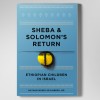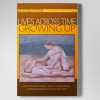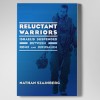Stopping power is a matter of physics: mass times velocity. A .45 caliber has greater stopping power but is slower because of its greater mass. The Berretta, using a .22, is faster, perhaps more accurate, but has less stopping power. The 9 millimeter FN (Fabrique Nationale of Belgium), which I also trained with on a Friday in 2006, is in-between in stopping power. On my desk is a .30 caliber spent shell. I spent it.
All this learned within about three hours of my first fire arms training. In fact, the first time I have ever shot. Training for the citizen police force I am doing before leaving Ra’anana for Jerusalem next Tuesday. Went with Russell, who, I learn afterwards, was a firearms instructor for the Jewish community police force in South Africa. In a multi-gated, guarded community, his house surrounded by fencing and electronic alarms, his mother was tortured with a blow-torch while his wife and two children were visiting. Thieves got through the back patio, as the maid opened the doors. The torture was gratuitous, just for the helluva it, as they had already robbed the house. After this, Russell and his family moved to Israel.
Back to the .30 caliber shell on my desk.
We train first on the carbine. Brief history for those of us who had never before fired nor held a carbine. Developed in WWII to be a one-handed rifle for paratroopers and such, the carbine can be held one-handed by its fore-shortened stock, or by its barrel. I sense that the whole matter here is stabilizing the weapon so you shoot where you intend. To do so, as in a bicycle, you work at becoming one with the weapon, so that it feels an extension of yourself; you put yourself around the weapon (don’t accommodate it to your body’s idiosyncracies). The marksman, Reuven — a bit potty around midsection, shaved head, sound-proof ear muffs with a whistle hanging from them — shows five steps to shoot straight. After cocking the first bullet into the chamber: 1. stock to shoulder; right hand on stock, index finger points down the barrel, towards target;
All this learned within about three hours of my first fire arms training. In fact, the first time I have ever shot. Training for the citizen police force I am doing before leaving Ra’anana for Jerusalem next Tuesday. Went with Russell, who, I learn afterwards, was a firearms instructor for the Jewish community police force in South Africa. In a multi-gated, guarded community, his house surrounded by fencing and electronic alarms, his mother was tortured with a blow-torch while his wife and two children were visiting. Thieves got through the back patio, as the maid opened the doors. The torture was gratuitous, just for the helluva it, as they had already robbed the house. After this, Russell and his family moved to Israel.
Back to the .30 caliber shell on my desk.
We train first on the carbine. Brief history for those of us who had never before fired nor held a carbine. Developed in WWII to be a one-handed rifle for paratroopers and such, the carbine can be held one-handed by its fore-shortened stock, or by its barrel. I sense that the whole matter here is stabilizing the weapon so you shoot where you intend. To do so, as in a bicycle, you work at becoming one with the weapon, so that it feels an extension of yourself; you put yourself around the weapon (don’t accommodate it to your body’s idiosyncracies). The marksman, Reuven — a bit potty around midsection, shaved head, sound-proof ear muffs with a whistle hanging from them — shows five steps to shoot straight. After cocking the first bullet into the chamber: 1. stock to shoulder; right hand on stock, index finger points down the barrel, towards target;
2. left hand cradles the stock; then
3. hand shifts back to snug the magazine;
4. right cheek firmly nuzzles stock.
5. Then, finger trigger; squeeze.
(Now, I picture most vividly Reuven in profile, whipping the handgun from holster, right elbow 90 degrees gun at eye level, left hand cocks as in-one-motion rotates gun upright, elbow to side, fore finger points to target, then shoots in bursts. He demonstrates repeatedly, lightening moves, pivots 180 degrees to us from side to side. Moves precisely, focused, as if nothing exists but his imaginary fatal target. I want to be at his side, on his side. Always.)
But, Reuven starts with the Carbine. He is crisp, speaks in bursts, declarative statements. 80% of terrorist attacks in the past year are in this Sharon/Dan region. He will teach us to stop a terrorist, shoot him. This is not target practice, it is not sport, nor we will not qualify for Madgam, the SWAT team. He will teach us to load aim, shoot from standing, kneeling and concealed positions. Russell later tells me that Reuven covers in 3 hours what is generally taught in three days.
The Carbine. Designed by convicted murderer, David M. “Carbine” Williams, for Winchester arms, it was first delivered to the US army in 1942; about six million made and is now on its third generation, the second moving from fixed wooden stock, to foldable. A semi-automatic, it works off a clip, is much lighter than the previous M1 rifle. Effective to 300 yards.
(Now, I picture most vividly Reuven in profile, whipping the handgun from holster, right elbow 90 degrees gun at eye level, left hand cocks as in-one-motion rotates gun upright, elbow to side, fore finger points to target, then shoots in bursts. He demonstrates repeatedly, lightening moves, pivots 180 degrees to us from side to side. Moves precisely, focused, as if nothing exists but his imaginary fatal target. I want to be at his side, on his side. Always.)
But, Reuven starts with the Carbine. He is crisp, speaks in bursts, declarative statements. 80% of terrorist attacks in the past year are in this Sharon/Dan region. He will teach us to stop a terrorist, shoot him. This is not target practice, it is not sport, nor we will not qualify for Madgam, the SWAT team. He will teach us to load aim, shoot from standing, kneeling and concealed positions. Russell later tells me that Reuven covers in 3 hours what is generally taught in three days.
The Carbine. Designed by convicted murderer, David M. “Carbine” Williams, for Winchester arms, it was first delivered to the US army in 1942; about six million made and is now on its third generation, the second moving from fixed wooden stock, to foldable. A semi-automatic, it works off a clip, is much lighter than the previous M1 rifle. Effective to 300 yards.
The “dry training is perhaps twenty minutes: shows us how to check the rifle when we receive it. Always check. Trust no one. Two fingers into the empty magazine to be sure no bullets inside; slide back the bolt and eye-check for remaining bullet in rifle; check that safety is on. Then load.
Details. If the magazine’s ears are bent apart (can happen with repeated use), bullets can jam. Check the magazine. Check that the magazine is fully loaded; too late when in the field, to find out that
only two bullets were in the magazine.
Then Reuven points out the “line of death.” No one steps past it on the firing range. Never. Stand behind, get ear cover, pick up rifle. Check rifle. Load. Then, always: hold barrel parallel to ground;
always point towards target; always keep forefinger along barrel until ready to fire. Always, always. Yet, I am surprised how often, someone with loaded rifle, turns to ask Reuven or an instructor a
question, with barrel waving in the breeze, finger on trigger.
Perhaps 60 people crowded in here. We are quickly lined up to shoot. Five standing; five kneeling.
Standing position I recall: about forty-five degree knee bend, feet a bit beyond shoulder width, right slightly back.
I drop to kneel; forget details. Make a body tripod: right knee drops; butt on right heel; left elbow rests just forward of left knee; cheek to stock. Shoot.
Once cocked, the Carbine unloads its clip with each pull. If jammed, check bolt; resume.
Cartridges fly about; one, still-hot, glances my scalp. The ground is covered in a hail of .30 cartidges. Two girls reload our magazines. You could tap dance without taps here.
I go for a second round, realizing that I fired not fully aware of what I had done. Surprised at the power of the recoil, how much the barrel rises after each shot and needs to be re-aimed. Concentrate on getting the front sight (a “shin” in hebrew) within the center of the circular rear sight. With the Carbine, I use my right eye.
We break before handgun training.
We will shoot on Berrettas and FN, except for those who brought private guns.
Reuven emphasizes the close-range and difficult accuracy of handguns. With good aim, effective to ten meters; every meter beyond, accuracy drops fifty percent, until almost zero likelihood of hitting intended target at twenty meters. Intended target he emphasizes. A degree off in close range, means about one meter off from near target. He engraves into our heads that passersby get hit by handguns. Almost every close-quarter terrorist action has some passerby hit by accident.
After the dry training on gun parts, the rapid draw demonstration, he keeps it to the point. For handgun, point and shoot. Don’t bother aiming. Point: with forefinger towards target, then into trigger, then quick bursts. Aim to stop the terrorist.
Details. If the magazine’s ears are bent apart (can happen with repeated use), bullets can jam. Check the magazine. Check that the magazine is fully loaded; too late when in the field, to find out that
only two bullets were in the magazine.
Then Reuven points out the “line of death.” No one steps past it on the firing range. Never. Stand behind, get ear cover, pick up rifle. Check rifle. Load. Then, always: hold barrel parallel to ground;
always point towards target; always keep forefinger along barrel until ready to fire. Always, always. Yet, I am surprised how often, someone with loaded rifle, turns to ask Reuven or an instructor a
question, with barrel waving in the breeze, finger on trigger.
Perhaps 60 people crowded in here. We are quickly lined up to shoot. Five standing; five kneeling.
Standing position I recall: about forty-five degree knee bend, feet a bit beyond shoulder width, right slightly back.
I drop to kneel; forget details. Make a body tripod: right knee drops; butt on right heel; left elbow rests just forward of left knee; cheek to stock. Shoot.
Once cocked, the Carbine unloads its clip with each pull. If jammed, check bolt; resume.
Cartridges fly about; one, still-hot, glances my scalp. The ground is covered in a hail of .30 cartidges. Two girls reload our magazines. You could tap dance without taps here.
I go for a second round, realizing that I fired not fully aware of what I had done. Surprised at the power of the recoil, how much the barrel rises after each shot and needs to be re-aimed. Concentrate on getting the front sight (a “shin” in hebrew) within the center of the circular rear sight. With the Carbine, I use my right eye.
We break before handgun training.
We will shoot on Berrettas and FN, except for those who brought private guns.
Reuven emphasizes the close-range and difficult accuracy of handguns. With good aim, effective to ten meters; every meter beyond, accuracy drops fifty percent, until almost zero likelihood of hitting intended target at twenty meters. Intended target he emphasizes. A degree off in close range, means about one meter off from near target. He engraves into our heads that passersby get hit by handguns. Almost every close-quarter terrorist action has some passerby hit by accident.
After the dry training on gun parts, the rapid draw demonstration, he keeps it to the point. For handgun, point and shoot. Don’t bother aiming. Point: with forefinger towards target, then into trigger, then quick bursts. Aim to stop the terrorist.
With the gun, we learn differently. Do fine with standing shots, then drop to shoot, with left knee down. Both instructor and I notice that I err. Correct to right knee, and he gives a slight push to my rump, encourages me to have a firm seat on my heel. Fire the remaining five
into target.
into target.
We move past the line of death, deep into the target range. This is a shabby concrete outside structure; nothing like the TV versions of indoor ranges with mobile targets and such. Beyond the targets is a
deep berm of heavy sand (to absorb bullets, prevent ricochet) and beyond that, concrete wall. The wood posts between the line of death and the far targets are bullet riddled.
This is just to get the feel. No drawing from holsters, no fancy right elbow at 90 degrees followed by left hand cock and hand rotation 90 degrees to elbow at side. Just stand, grasp right hand with three
fingers on stock, forefinger along barrel, thumb ninety degrees around the inner stock; left hand three lower fingers wrapped around right fingers. Stand feet slightly wider than shoulders, elbows slightly
out, triangulating with the gun at the apex of this isosceles. Bring gun up to eyes, not head down to gun. Fire in burst.
Then, drop to crouch, and fire remaining clip. Each Berretta carries eight .22 calibers, just a bit more than half the diameter than its larger cousin, the nine millimeter. Lighter, smaller, the Berretta is
weapon of choice for citizen police. The nine millimeter FN has a more pronounced recoil; need to get it aimed more, even as I try to remember to point, shoot bursts.
On the bike ride back, Russell reveals his knowledge and background about arms. Defying the danger of the traffic, I try to listen. He goes through technical details; differences between rifle and handgun;
how god made each man different and Samuel Colt made every man “equal”; how the rifled barrel spins the bullet so that it begins to spiral outside, enters the body, flipping over itself, creating greater danger. From him I learn about stopping power. From this father of four, an engineer, who left South Africa after his mother was tortured in front of his wife and children. Who lives in this idyllic Ra’anana. Who, on bike patrol the night before, sees the suspicious abandoned bag left by the sidewalk of a bustling restaurant; the car parked in a bus zone as commuters wait; the Russian fellow, nervously smoking a cigarette as he waits outside a money-change store as the owner is just locking up. He notices more than I see. I admire, but do not envy how much he notices.
What I do notice at the firing range is the absence of machismo. These men and women are here to learn how to shoot; there is no sport in this. There is an air of seriousness without being grim.Stopping power. Sobering.
My friend, Paul told me that the two countries with highest per capita ownership of firearms are Switzerland and Israel; both have low homicide rates. Seems a matter of culture and self-control.
deep berm of heavy sand (to absorb bullets, prevent ricochet) and beyond that, concrete wall. The wood posts between the line of death and the far targets are bullet riddled.
This is just to get the feel. No drawing from holsters, no fancy right elbow at 90 degrees followed by left hand cock and hand rotation 90 degrees to elbow at side. Just stand, grasp right hand with three
fingers on stock, forefinger along barrel, thumb ninety degrees around the inner stock; left hand three lower fingers wrapped around right fingers. Stand feet slightly wider than shoulders, elbows slightly
out, triangulating with the gun at the apex of this isosceles. Bring gun up to eyes, not head down to gun. Fire in burst.
Then, drop to crouch, and fire remaining clip. Each Berretta carries eight .22 calibers, just a bit more than half the diameter than its larger cousin, the nine millimeter. Lighter, smaller, the Berretta is
weapon of choice for citizen police. The nine millimeter FN has a more pronounced recoil; need to get it aimed more, even as I try to remember to point, shoot bursts.
On the bike ride back, Russell reveals his knowledge and background about arms. Defying the danger of the traffic, I try to listen. He goes through technical details; differences between rifle and handgun;
how god made each man different and Samuel Colt made every man “equal”; how the rifled barrel spins the bullet so that it begins to spiral outside, enters the body, flipping over itself, creating greater danger. From him I learn about stopping power. From this father of four, an engineer, who left South Africa after his mother was tortured in front of his wife and children. Who lives in this idyllic Ra’anana. Who, on bike patrol the night before, sees the suspicious abandoned bag left by the sidewalk of a bustling restaurant; the car parked in a bus zone as commuters wait; the Russian fellow, nervously smoking a cigarette as he waits outside a money-change store as the owner is just locking up. He notices more than I see. I admire, but do not envy how much he notices.
What I do notice at the firing range is the absence of machismo. These men and women are here to learn how to shoot; there is no sport in this. There is an air of seriousness without being grim.Stopping power. Sobering.
My friend, Paul told me that the two countries with highest per capita ownership of firearms are Switzerland and Israel; both have low homicide rates. Seems a matter of culture and self-control.



